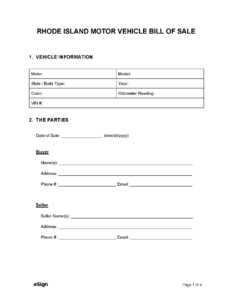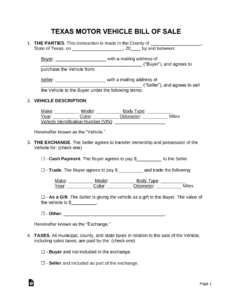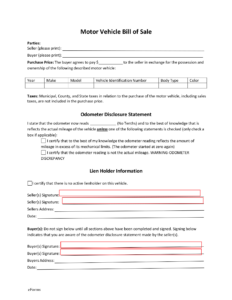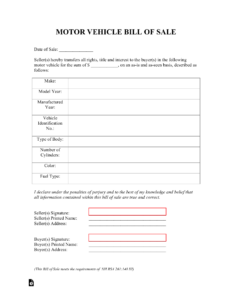Buying or selling a vehicle can be an exciting time, whether you are upgrading to a new model or simply need to transfer ownership of an older one. However, amidst the excitement of finding the perfect car or the right buyer, it is crucial not to overlook the essential paperwork that legally seals the deal. This is where a vehicle bill of sale comes into play, serving as a vital document for both parties involved in the transaction.
Think of it as the official receipt and agreement that protects everyone. It is more than just a piece of paper; it is a legal record confirming the transfer of ownership from one individual or entity to another. Without this document, proving who owns the vehicle, the price paid, or even the date of the sale can become incredibly complicated, potentially leading to disputes and legal headaches down the road.
Why You Absolutely Need a Vehicle Bill of Sale
A vehicle bill of sale is the bedrock of any successful and secure private vehicle transaction. It acts as a legally binding contract that outlines all the critical details of the sale, protecting both the buyer and the seller from potential disagreements or liabilities in the future. For the seller, it provides irrefutable proof that the vehicle is no longer their responsibility, which is crucial for liability purposes if the car is involved in an accident or receives a parking ticket after the sale. It also helps in notifying the DMV or equivalent authority that they are no longer the owner, preventing future registration renewal notices or taxes.
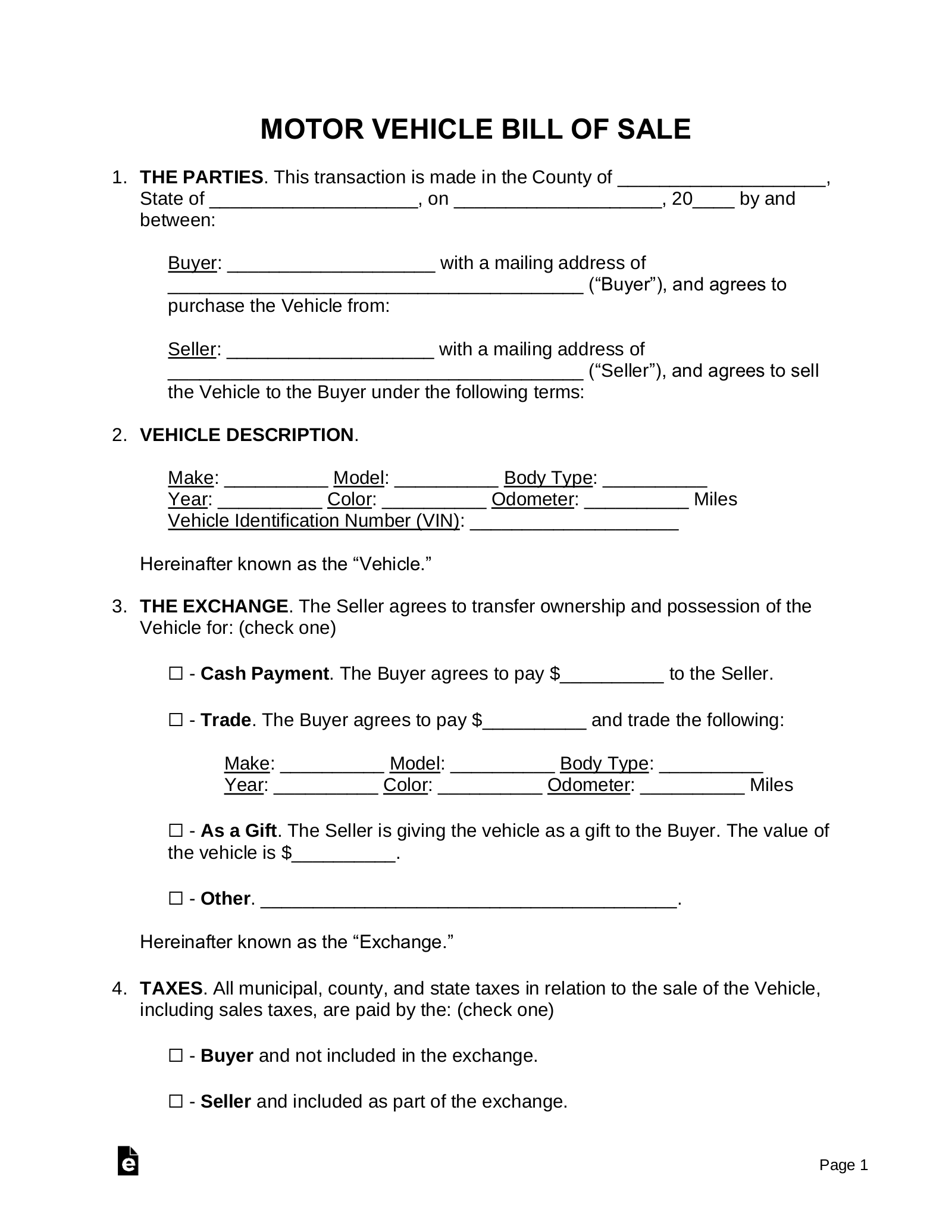
For the buyer, this document is equally indispensable. It serves as your official proof of purchase and ownership, a requirement for registering the vehicle in your name and obtaining new license plates. Without a properly executed bill of sale, you might face significant hurdles at your local Department of Motor Vehicles or equivalent agency when trying to title the car. It validates your claim to the vehicle and ensures you have a legal record of the transaction, detailing the purchase price and confirming that the vehicle was sold “as-is” or with any specific warranties agreed upon.
Furthermore, a comprehensive bill of sale helps to prevent disputes over the condition of the vehicle at the time of sale. If, for instance, a buyer later claims that a certain feature was promised but not delivered, the bill of sale can clarify the agreed-upon terms. It is a record that both parties signed off on, confirming their understanding of the transaction details. This clarity can save both parties immense time, stress, and potential legal fees should a disagreement arise.
The financial aspect is also important. For tax purposes, especially if you live in a state or region that charges sales tax on vehicle purchases, the bill of sale provides the official record of the sale price. This ensures you pay the correct amount of tax and have proper documentation for your financial records. It’s a clean break for the seller and a clean start for the buyer, all documented in one place.
Key Information a Good Template Should Include
- Date of Sale: When the transaction officially occurred.
- Buyer’s Full Name and Contact Information: Legal identification of the new owner.
- Seller’s Full Name and Contact Information: Legal identification of the previous owner.
- Vehicle Identification Number (VIN): The unique identifier for the vehicle.
- Make, Model, Year, and Odometer Reading: Specific details about the vehicle.
- Purchase Price: The agreed-upon amount for the sale.
- “As-Is” Clause or Warranty Details: Clearly stating the vehicle’s condition at sale.
- Signatures of Both Buyer and Seller: Essential for legal validity.
Creating Your Own Vehicle Bill of Sale Template
While the thought of drafting legal documents might seem daunting, creating or utilizing a vehicle bill of sale template is surprisingly straightforward and incredibly beneficial. Instead of starting from scratch and risking omitting crucial details, a well-designed template provides a ready-made framework that ensures all necessary information is included. This eliminates guesswork and helps streamline the process for both parties, making the transaction smoother and more secure. You don’t need to be a legal expert to complete one; you just need to ensure accuracy and completeness.
Many reliable sources offer free and customizable templates online. Government websites, legal aid organizations, and even reputable automotive sites often provide downloadable forms that comply with state-specific requirements. These templates are typically designed to be user-friendly, with clear fields to fill in and instructions to guide you. When choosing a vehicle bill of sale template, it is wise to pick one that is comprehensive and covers all the essential aspects we discussed earlier, ensuring it is appropriate for your specific state or province if possible.
Once you have your preferred template, the process of filling it out requires careful attention to detail. Both the buyer and the seller should be present to fill out the document together, ensuring all information is accurate and agreed upon. This includes verifying the Vehicle Identification Number (VIN), the exact make and model, the current odometer reading, and the agreed-upon purchase price. Any discrepancies here could lead to issues later on, so double-checking everything before signing is paramount.
After all the details are accurately entered, both the buyer and seller must sign and date the document. It is highly recommended that both parties receive a copy of the signed bill of sale for their records. In some jurisdictions, having the document notarized or witnessed by a third party might add an extra layer of legal protection, although this is not always a strict requirement. The primary goal is to have a clear, undeniable record of the transaction that can be referenced by either party or official bodies if needed.
Here are some essential sections you’ll typically find in a comprehensive vehicle bill of sale template:
- Vehicle Information: Clearly identifying the specific car being sold.
- Buyer and Seller Details: Full legal names and contact information for both parties.
- Purchase Price and Payment Method: How much was paid and how.
- Conditions of Sale: Such as “as-is” or specific warranties.
- Signatures and Dates: To authenticate the agreement.
- Optional: Notary or Witness Signatures: For added legal weight.
Navigating the sale or purchase of a vehicle doesn’t have to be complicated, especially when you are equipped with the right tools. A properly executed vehicle bill of sale is more than just a piece of paper; it is your ultimate safeguard in a private transaction, providing clarity, legal protection, and peace of mind for everyone involved. It simplifies the administrative processes like registration and titling, ensuring a smooth transition of ownership without any unnecessary hurdles.
By taking the time to complete this vital document thoroughly, you are investing in a secure and straightforward process. It is the definitive record that confirms the transfer, protects both parties from future liabilities, and serves as an undeniable testament to the agreed-upon terms. Make sure this crucial step is never overlooked, ensuring a happy and hassle-free experience for both buyer and seller.
